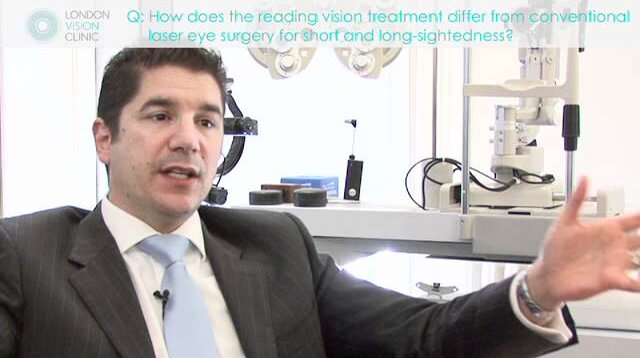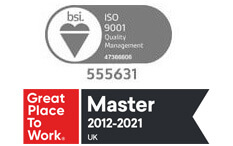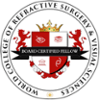Common Questions About Laser Eye Surgery for Presbyopia

Despite the fact that Laser Corrective Surgery for presbyopia has now been around for almost 20 years (at London Vision Clinic, at least), many people are still unaware of its existence. For this reason, we regularly receive many questions from our patients about PRESBYOND® Laser Blended Vision.
We decided to answer some of the more common questions below, to help you stay as informed as possible when considering your options for presbyopia. So, let’s take a look.
What is PRESBYOND® Laser Blended Vision?
PRESBYOND® Laser Blended Vision is a unique and innovative treatment for presbyopia which employs traditional Laser Eye Surgery techniques – such as LASIK or LASEK/PRK – to restore reading vision.
It achieves this by correcting one eye mainly for distance vision with a little near vision and the other eye mainly for near vision with a little distance vision. This creates a “blend zone” allowing your brain to process these different images and combine them to create clear vision across all distances.
To learn more about PRESBYOND® Laser Blended Vision, click here or watch the video below.
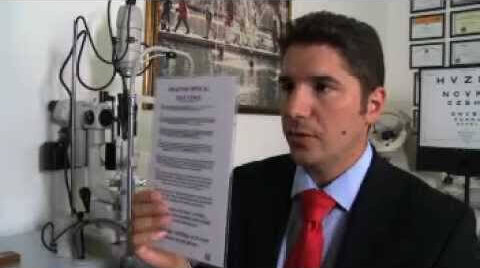
How does the reading vision treatment differ from conventional Laser Eye Surgery for short- and long-sightedness?
On the face of it, there is no difference between the laser surgery technique used for improving reading vision and that used for correcting short- and long-sightedness. We can achieve the PRESBYOND® Laser Blended Vision effect with LASIK, PRK or LASEK. The only difference is the way the eye is corrected.
In conventional Laser Eye Surgery treatment in younger patients, the eyes are corrected to very similar profiles in each eye to account for their refractive error. This is because, in these patients, the focusing power of the eye remains strong. In contrast, presbyopia patients require blended adjustment, essentially providing a full spectrum of vision. For this, each eye is corrected in a different way.
Dr Glenn Carp explains more in the video below.
How much can my reading vision improve?
Your reading vision is measured using a chart of different-sized text. These lines of text range from the size of a newspaper sub-head (N.24) to the size of the smallest print found on many advertisements (N.5). Reading vision results differ between short-sighted and long-sighted patients, with the former performing slightly better. As we get older, our reading vision gradually deteriorates.
After PRESBYOND® Laser Blended Vision treatment, 86% of long-sighted patients could read the smallest type (N.5) without glasses after their treatment. Furthermore, 92% of short-sighted patients could read the smallest type (N.5) without glasses.
All patients (100%) who were previously short-sighted up to -9.00D could read N.8, and 100% of previously long-sighted patients up to +6.00 could read N.12. Both N.8 and N.12 are smaller than the size of print found on most written correspondence and computer screens.
In the video below, Dr Glenn Carp explains what improvement you can expect after PRESBYOND® Laser Blended Vision treatment.
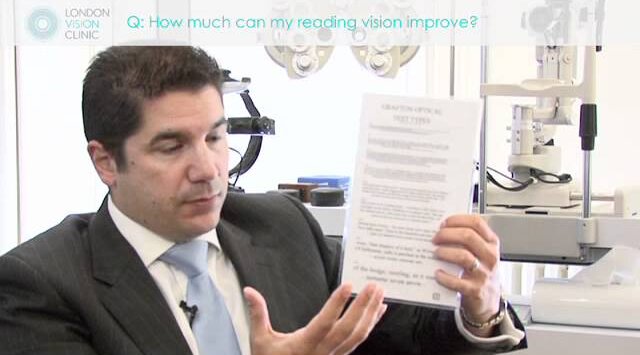
Will the improvement of my reading vision affect my distance vision?
The aim of PRESBYOND® Laser Blended Vision is to provide clear vision across all distances. It has been specifically designed to maintain the strong distance or reading vision that each patient has before surgery and boost the reciprocal. As a result, the vast majority of patients find that their distance vision is virtually unaffected by the treatment.
In some patients, there is an adjustment period as it can take some time to get used to the different focusing abilities of each eye. However, most patients are able to just within two weeks to a month after the procedure.
In the video below, Dr Glenn Carp explains more about how PRESBYOND® Laser Blended Vision affects your distance vision.
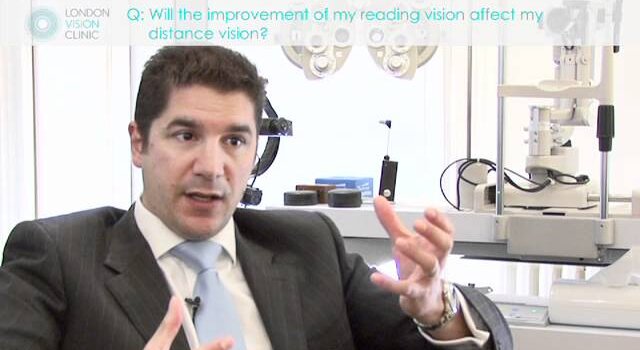
Why do so many clinics not treat the loss of reading vision?
Despite being around for almost 20 years, not all clinics are able to offer PRESBYOND® Laser Blended Vision. This is usually because their laser platforms are not equipped for this kind of correction. Older generation lasers are usually equipped to correct either distance or reading vision, but not both.
Traditionally, alternative treatments have been used to correct presbyopia, including monovision and multifocal intraocular lenses. However, these treatments are not as well tolerated and are more invasive than laser blended vision treatment. At London Vision Clinic, we have access to the most up-to-date technology allowing us to offer our patients PRESBYOND® Laser Blended Vision which is tolerated by around 97% of patients.
In the video below, Dr Glenn Carp explains why many clinics are unable to offer laser blended vision treatment for presbyopia.
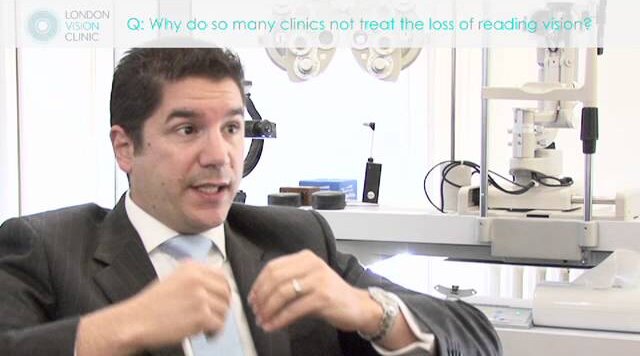
Do most patients who have PRESBYOND® Laser Blended Vision require treatment in one eye or two?
PRESBYOND® Laser Blended Vision works by correcting both eyes to create a blend zone between near and distance vision. For the correction of presbyopia, we correct both eyes to achieve the optimal balancing effect between the two eyes.
In PRESBYOND® Laser Blended Vision, one eye is corrected for mainly distance vision while the other is corrected for mainly near vision. This provides clear vision across all distances.
Dr Glenn Carp tells us more in the video below.
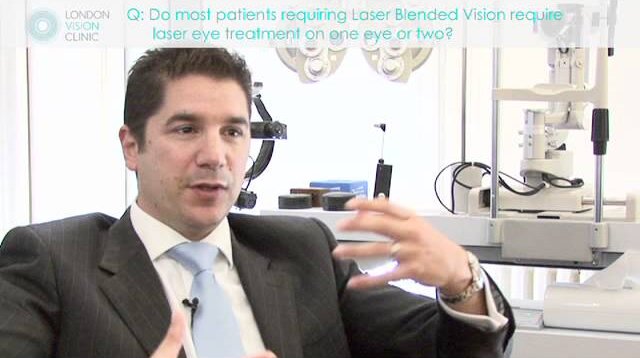
How long will the effects of PRESBYOND® Laser Blended Vision last?
While PRESBYOND® Laser Blended Vision is an extremely effective treatment, it only treats the effects of presbyopia, not the cause. Therefore, your eyes will continue to change as you get older, even after treatment. For this reason, we do not describe the effects of PRESBYOND® Laser Blended Vision as permanent.
But that doesn’t necessarily mean you will need reading glasses again. Most patients who are treated with a full blended vision profile have sufficient reading vision to last them the rest of their lives. Nonetheless, the small changes that occur in your vision over the years may result in a slight reduction in your near vision. This may mean that reading very fine print may become slightly more difficult.
However, if your vision does deteriorate significantly in the years to come, there is always the possibility of having an enhancement procedure – though this is rarely required.
To learn more about your vision after PRESBYOND® Laser Blended Vision, click here or watch the video below.
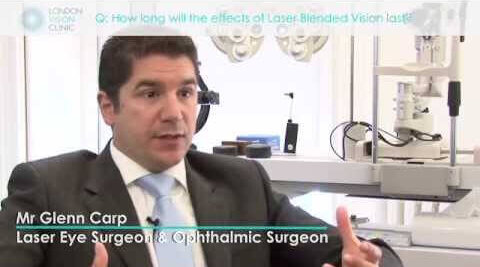
If you’d like to learn more about your suitability for PRESBYOND® Laser Blended Vision, book a no-obligation consultation today. Alternatively, get in touch with one of our friendly clinic coordinators who can answer any further questions.
